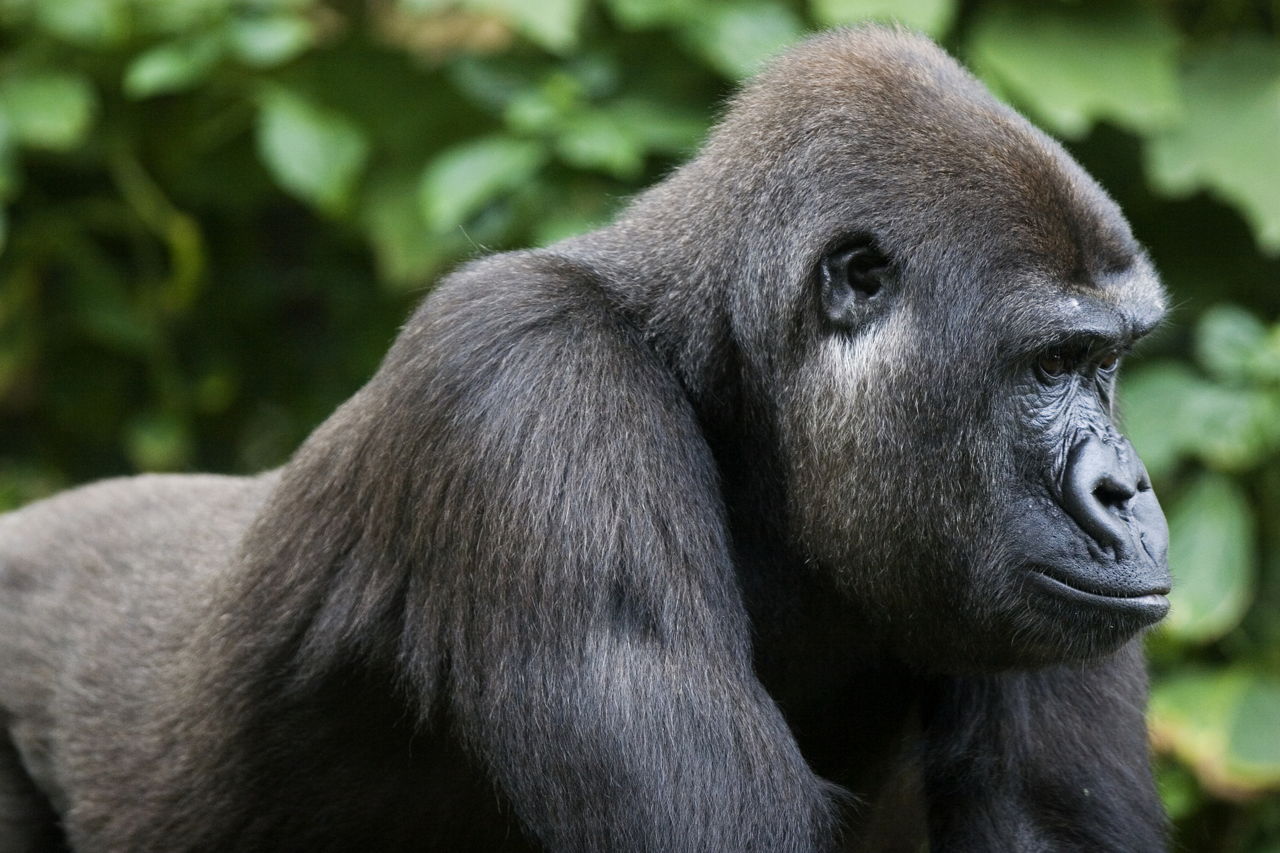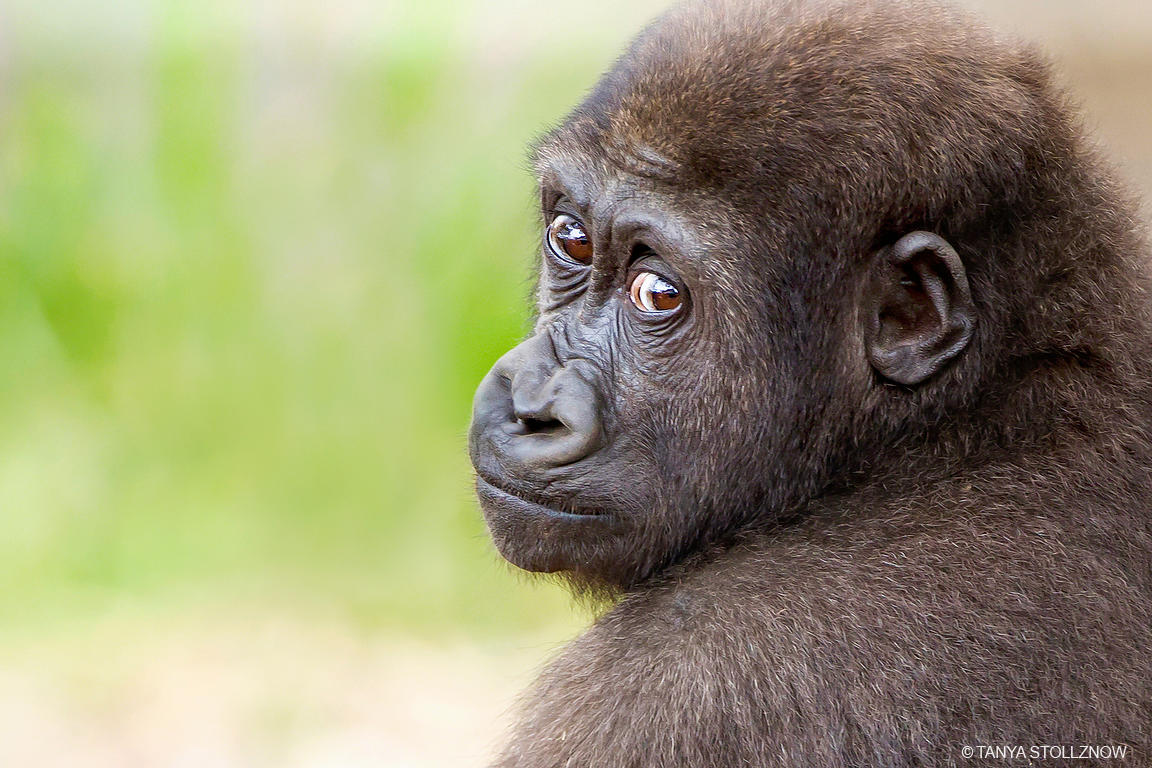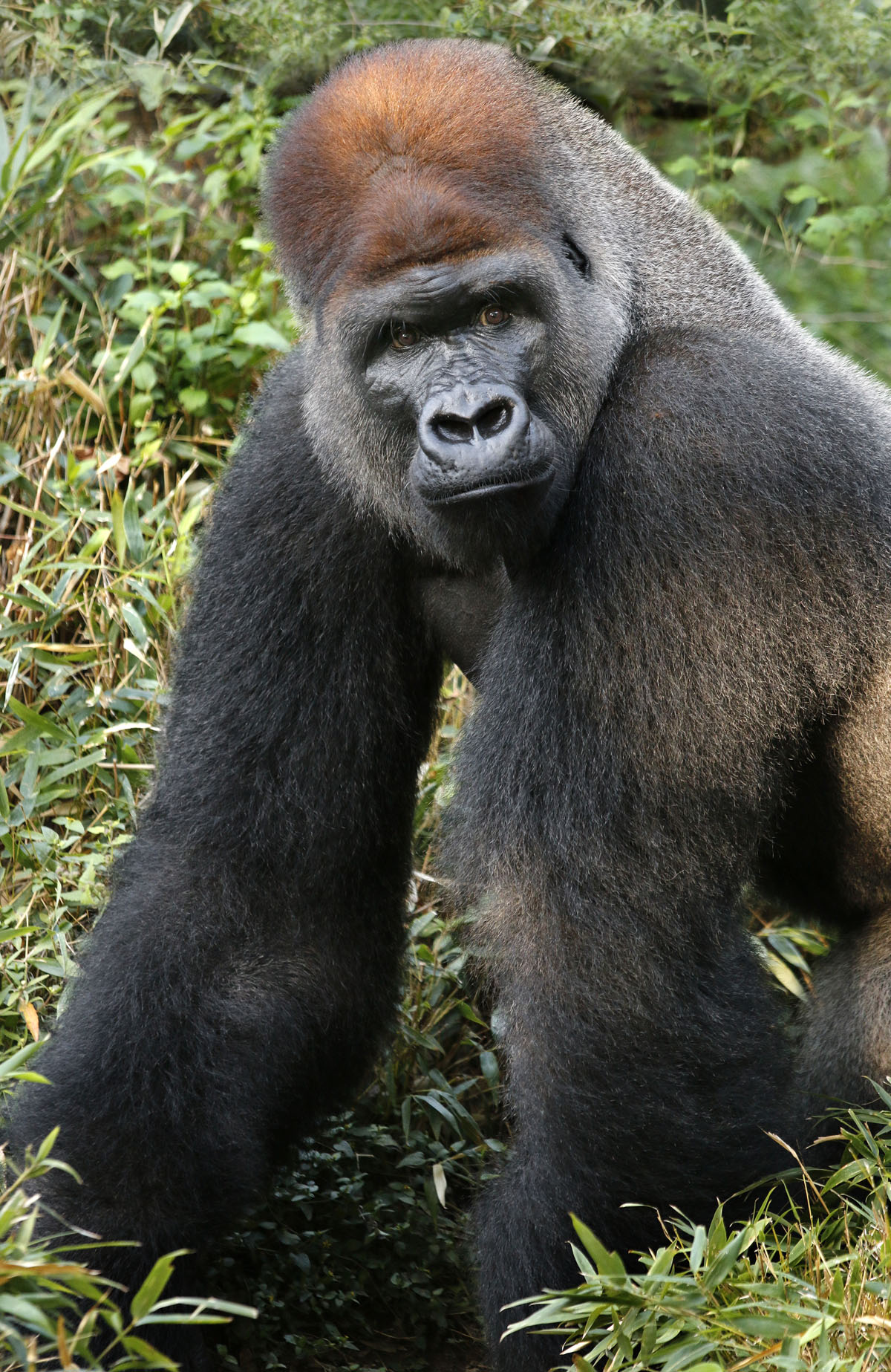THE WESTERN LOWLAND GORILLA
Background
The western lowland gorilla is the most numerous and widespread of all gorilla subspecies. Populations can be found in Cameroon, the Central African Republic, the Democratic Republic of Congo and Equatorial Guinea as well as in large areas in Gabon and the Republic of Congo.

The exact number of western lowland gorillas is not known because they inhabit some of the most dense and remote rainforests in Africa. Significant populations still exist, including in isolated swamps and the remote swampy forests of the Republic of Congo.

Population
Western lowland gorillas can be distinguished from other gorilla subspecies by their slightly smaller size, their brown-grey coats and auburn chests. They also have wider skulls with more pronounced brow ridges and smaller ears. Large numbers have not protected the western lowland gorilla from decline.

Because of poaching and disease, the gorilla’s numbers have declined by more than 60% over the last 20 to 25 years. Even if all of the threats to western lowland gorillas were removed, scientists calculate that the population would require some 75 years to recover.
Endangered
Central Africa is home to not only gorillas, but also the deadly Ebola virus. Ebola has caused a number of massive gorilla and chimpanzee die-offs in the remote forests at the heart of the primates’ ranges. Some scientists estimate that it has killed about one third of the wild gorilla population, mostly western lowland gorillas.

The toll has been even greater in some areas, such as the Minkébé Forest—once considered one of the most important populations—where the virus may have killed more than 90% of the region’s gorillas and chimpanzees.
The Ebola virus has likely spread throughout much of the western lowland gorilla’s range. WWF has begun support for programs that increase antipoaching efforts and raise awareness of the dangers of eating bushmeat. In addition, WWF has contributed to Ebola research and efforts to develop a vaccine for gorillas.



